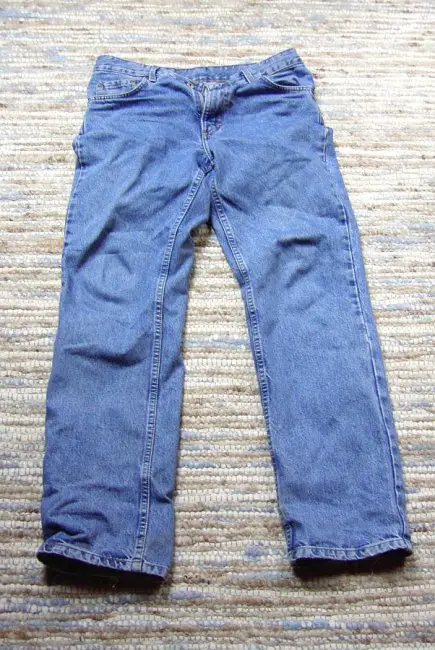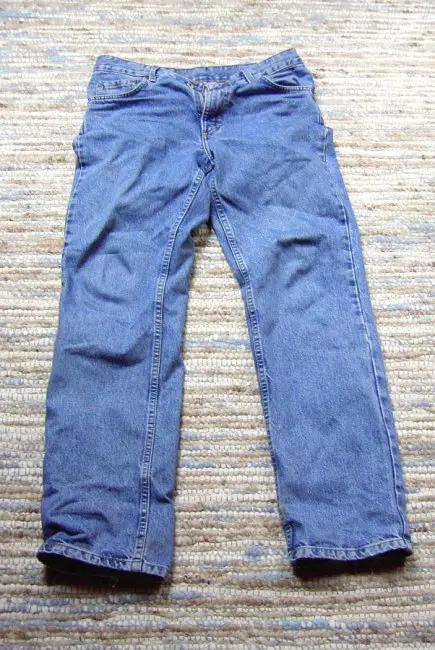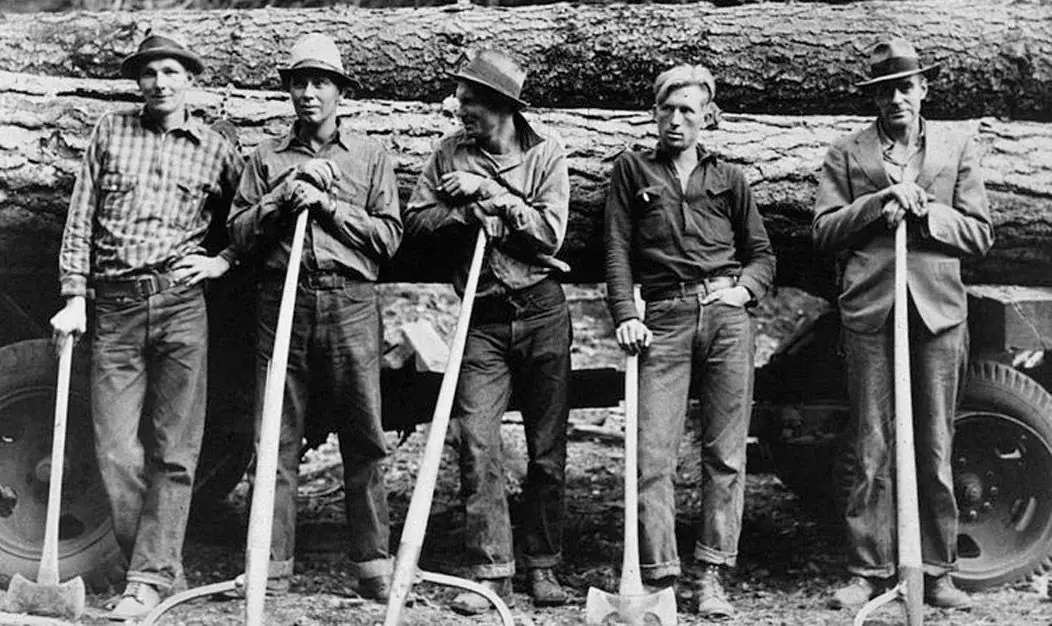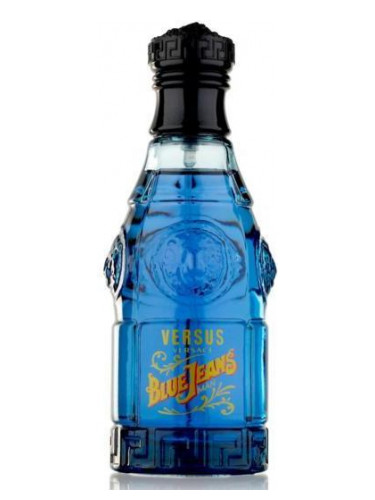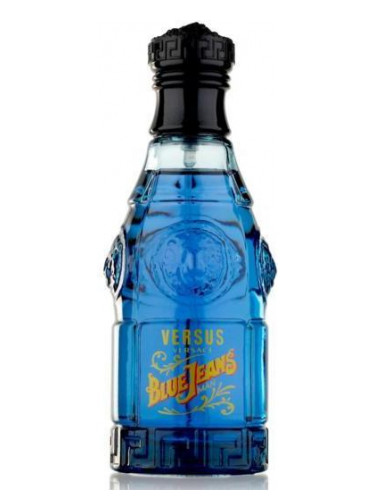The word “jeans” originates from the French phrase “bleu de Gênes,” referring to the blue-coloured fabric from Genoa, Italy. Jeans, a staple in modern-day fashion, have a fascinating linguistic history.
The term “jeans” finds its roots in the French phrase “bleu de Gênes,” translating to “blue from Genoa. ” This name was used to designate the sturdy blue fabric that originated in Genoa, Italy. During the 19th century, this durable material caught the attention of miners in the American West, who sought sturdy clothing for their demanding work conditions.
Over time, “bleu de Gênes” was anglicized to “jeans,” becoming synonymous with the denim trousers we wear today. From its humble beginnings in Genoa to its adoption by American miners and subsequent rise to global popularity, the word “jeans” has a rich etymological tapestry that reflects the global appeal of this wardrobe essential.
The Birth Of Denim: A Fabric With A Story
The word “jeans” has become synonymous with denim pants, but have you ever wondered where the term actually comes from? The birth of denim can be traced back to its early use as a versatile fabric. During the exploration of new lands, sailors would make use of sturdy fabrics for their sails and clothing, and denim soon emerged as the fabric of choice. Its durable nature and ability to withstand harsh conditions made it ideal for long journeys and outdoor activities.
Denim fabric is known for its unique characteristics that set it apart from other fabrics. Its twill weave, with diagonal lines, provides added strength and durability. The indigo dye used to colour denim gives it that iconic blue hue, and as the fabric ages, it develops a natural fading effect that adds character and charm to each piece. The combination of strength, colour, and ageing makes denim a timeless fabric that continues to be cherished by fashion enthusiasts around the world.
An Indigo Link: The Connection To Genoa
An indigo link connecting jeans and Genoa can be uncovered by tracing the influence of Genoese sailors. Genoa, a city in Italy, played a significant role in the development of jeans as we know them today. The word “jeans” itself comes from the French word “Gênes,” which means Genoa. The city was famous for its production of a durable fabric known as “jean,” which was used for sailors’ uniforms.
During the 17th century, Genoese sailors travelled to the New World, particularly to the Caribbean and Americas, where they traded their goods, including their durable jeans fabric. This fabric caught the attention of American miners during the California Gold Rush in the mid-19th century. It was then that Levi Strauss, a German-born American entrepreneur, began creating sturdy pants using the indigo-dyed fabric, which later became known as “blue jeans.”
Thus, the word “jeans” can be traced back to Genoa, and the influence of Genoese sailors and their jeans fabric on American fashion and culture cannot be overstated.
Ranchers And Miners: The American Revolution Of Jeans
The word “jeans” has become synonymous with denim pants, but its origins can be traced back to the American Revolution. Ranchers and miners played a crucial role in the history of jeans, and their love for durable workwear made jeans a staple in American fashion. A key figure in popularizing jeans was Levi Strauss, a German immigrant who saw the potential of denim pants during the California Gold Rush.
The Gold Rush had a significant impact on the rise of jeans. Miners needed sturdy clothing that could withstand the harsh conditions of their work, and jeans made from durable denim fabric fit the bill perfectly. The durability and practicality of jeans made them the go-to choice for miners and gradually gained popularity among other working-class communities as well.
Levi Strauss recognized the demand for quality workwear and began producing denim pants, reinforcing their durability with copper rivets. This innovative approach set the foundation for the iconic blue jeans we know today. Thanks to the ingenuity of ranchers, miners, and entrepreneurs like Levi Strauss, jeans have become a timeless fashion staple that continues to transcend generations.
Beyond Blue: The Evolution Of Jeans Style
The emergence of different jean fits and styles Jeans have come a long way since their humble beginnings as workwear. Today, there are numerous fits and styles available to suit every body type and fashion preference. From skinny jeans to bootcut, high-waisted to low-rise, the options are endless. This evolution has been influenced by various factors, including the rise of Hollywood and fashion icons. Celebrities often set fashion trends, and their love for jeans has played a significant role in shaping the industry.
Hollywood-style icons like James Dean, Marilyn Monroe, and Audrey Hepburn made jeans a symbol of rebellion and effortless cool. Designers and brands have also played a vital role in popularizing different jean styles and fit through their runway shows and marketing campaigns. As a result, jeans have become a staple in everyone’s wardrobe, transcending generations and cultures.
Jeans Around The World: Global Adoption And Adaptation
The word “jeans” is a globally recognized term, but have you ever wondered where it actually comes from? Originally, jeans were created in the United States and gained popularity as workwear due to their durability and functionality. However, jeans quickly spread beyond the US borders and became a fashion staple worldwide.
The cultural significance of jeans varies across different regions, with each area adapting and incorporating its own unique style and preferences. For example, in Japan, denim enthusiasts have embraced jeans and created their own intricate designs and manufacturing techniques, such as selvedge denim.
Similarly, in India, jeans have been adopted and blended with traditional clothing to create a fusion of styles. This cultural adaptation showcases the versatility of jeans and how they can be integrated into diverse fashion trends.
From the streets of Paris to the bustling markets of Brazil, jeans have become a universal symbol of style and comfort. They transcend borders and represent a global fashion phenomenon that continues to evolve with the changing times.
The Modern Jeans Industry: Manufacturing And Marketing
The word “jeans” has become synonymous with denim pants in the modern fashion industry. The origins of this term can be traced back to the mid-19th century when denim fabric was first produced in Genoa, Italy. The fabric, known as “jean,” was initially used for making clothing items such as sailor pants.
However, it was the American entrepreneur Levi Strauss who revolutionized the jeans industry. Strauss, along with tailor Jacob Davis, created the first pair of riveted jeans, which were highly durable and suitable for manual labourers. Over time, jeans gained popularity among the younger generation and became a symbol of rebellion and counterculture in the 20th century.
Today, the manufacturing process of jeans involves various stages, including fabric selection, cutting, sewing, washing, and finishing. The contemporary jeans industry also relies heavily on branding and marketing campaigns to create unique identities for different jeans brands, targeting specific consumer segments.
Sustainability And Jeans: Navigating The Environmental Impact
The word “jeans” has become a staple in our everyday vocabulary. But have you ever wondered where it actually comes from? Well, let’s dive into the history and unravel the origins of this beloved item of clothing.
Jeans, as we know them today, have their roots in the city of Genoa, Italy. In the 16th century, Genoese sailors were known for wearing sturdy trousers made from a robust fabric called “gênes.” These trousers were highly durable and perfect for their demanding work at sea.
Fast forward to the mid-19th century, jeans as we recognize them took shape in the hands of Levi Strauss, a German-born entrepreneur. Strauss, a tailor by trade, crafted denim trousers reinforced with copper rivets to withstand the rigours of the California Gold Rush. The popularity of these durable pants grew rapidly, and the rest is history.
Today, the environmental impact of jeans production is a topic of concern. The intensive use of water, chemicals, and energy in the manufacturing process raises significant challenges. However, the fashion industry has been making strides towards sustainability. Initiatives like organic cotton farming, water recycling, and ethical fashion choices aim to mitigate the environmental impact of jeans production and promote a more sustainable future.
Denim In The Digital Age: Jeans In The E-Commerce Era
With the rise of e-commerce, the jeans industry has experienced a significant impact. Online shopping trends have revolutionized the way people shop for jeans, influencing both retailers and consumers. E-commerce platforms provide a convenient and accessible way to browse and purchase jeans from the comfort of one’s own home.
This shift has also led to changes in the future of jeans retail. Retailers are now focusing on optimizing their online presence, and understanding the importance of search engine optimization (SEO) to reach their target audience effectively. They are utilizing digital marketing strategies to drive traffic to their websites and attract potential customers.
Moreover, the advent of e-commerce has allowed smaller, niche jeans brands to enter the market, offering a wider variety of styles and designs. This has resulted in greater competition and increased choices for consumers.
In summary, the influence of e-commerce on the jeans industry cannot be ignored. It has transformed the way jeans are bought and sold, shaping the future of retail and providing consumers with more options than ever before. As technology continues to advance, the relationship between e-commerce and jeans will continue to evolve.
Jeans Beyond Fashion: The Impact On Society
Jeans, a timeless fashion staple, have surpassed their initial purpose of being durable workwear. They have become an iconic symbol of rebellion and counter-culture movements. From the 1950s American rock n’ roll era to the 1970s hippie counterculture, jeans have represented a sense of freedom and nonconformity. Their cross-cultural significance has transcended borders, as people from various backgrounds embrace this versatile garment.
Jeans have played a crucial role in promoting inclusivity. Regardless of age, gender, or cultural background, jeans have become a unifying fashion choice. They have broken the barriers of traditional dress codes and allowed individuals to express their personal style. Jeans have become synonymous with comfort, versatility, and individuality. Whether it’s a casual day at the office or a night out with friends, jeans blend in seamlessly with various occasions, making a statement of inclusivity in the fashion world.
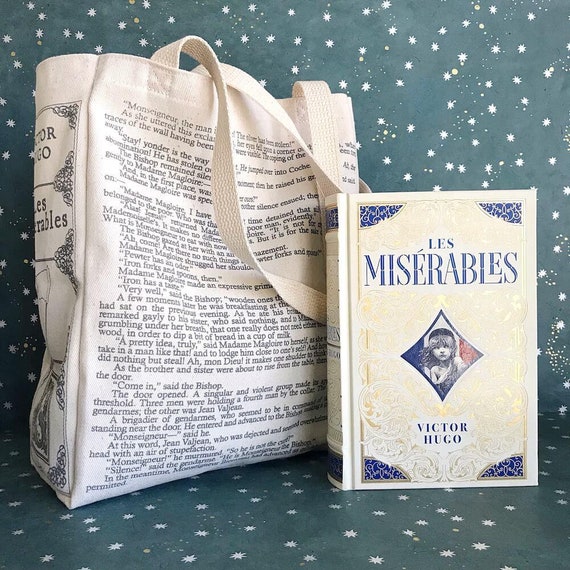
Credit: www.etsy.com
FAQs
Why Do We Say Jeans And Not Jean?
We say jeans and not jean because jeans are the plural form of jean.
What Were Jeans Originally Called?
Jeans were originally called “waist overalls” or “overalls” before they became commonly known as jeans.
Why Do We Call Them Blue Jeans?
Blue jeans are called so because they were originally made from blue denim fabric.
Is Jeans An American Word?
Yes, jeans is an American word, widely used to describe a type of trousers.
Conclusion
The origin of the word jeans takes us on a fascinating journey through time and geography. From Genoa, Italy, to the United States, this iconic term has undergone numerous transformations to become the beloved symbol of denim pants that we know today.
Its etymology can be traced back to the French phrase “bleu de Gênes,” meaning “blue of Genoa. ” Over the years, jeans have transcended their utilitarian roots and have become a fashion staple worldwide. From cowboys and labourers to fashion enthusiasts and celebrities, jeans have captured the hearts of people from all walks of life.
Understanding the rich history behind this word not only deepens our appreciation for the garment but also sheds light on the cultural significance it holds. So, the next time you put on a pair of jeans, remember the story that these words carry, connecting us to a legacy of style and durability.

